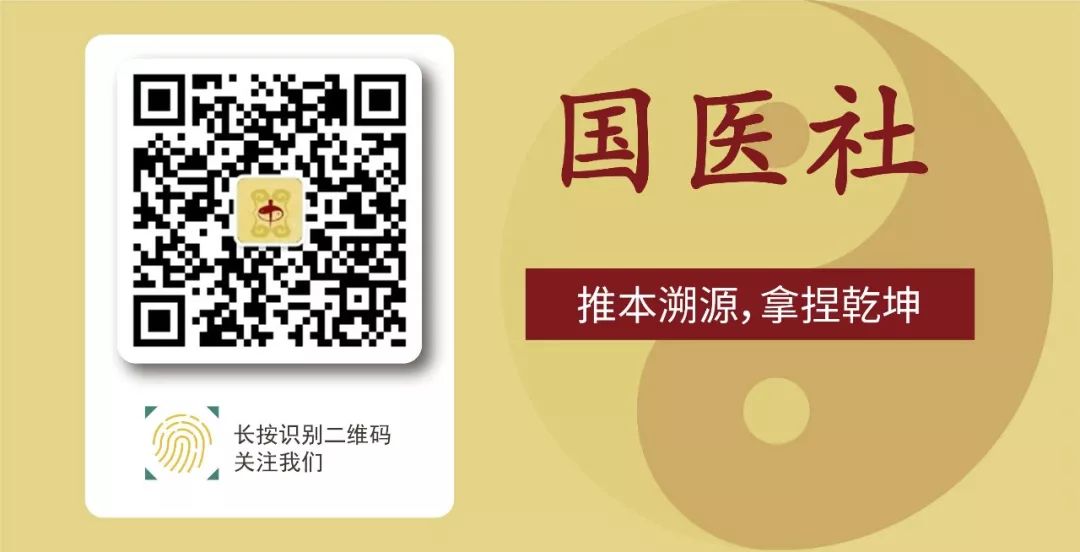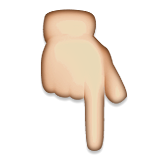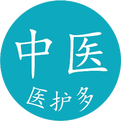In the treatment of stomach pain, ancient physicians often differentiated between deficiency and excess patterns. Deficiency patterns are mostly attributed to spleen and stomach weakness, with the main symptom being dull pain in the stomach area; excess patterns, on the other hand, can arise from various causes including external pathogens invading the stomach, irregular diet, and emotional disturbances, primarily manifesting as distending pain, stabbing pain, or burning pain in the stomach area, often accompanied by symptoms such as loss of appetite, nausea, vomiting, and sour regurgitation.
For stomach pain caused by spleen and stomach weakness, the treatment should focus on tonifying the body; for excess patterns characterized by obstruction of qi and blood flow, the treatment should primarily aim to expel the pathogenic factors. Today, we summarize the TCM treatment methods for stomach pain caused by excess patterns.
Common Causes and Mechanisms
External Pathogens Invading the Stomach
External cold, heat, and dampness can invade the stomach, leading to obstruction of the stomach’s qi mechanism, resulting in pain. Among these, cold pathogens are the most common, as their nature is to constrict, easily causing qi stagnation and resulting in disharmony of stomach qi, which leads to sudden stomach pain.
Irregular Diet
The stomach is the sea of food and drink, responsible for receiving and digesting food. Long-term overeating or binge eating of cold foods can damage the yang qi of the middle burner; excessive alcohol consumption can harm the stomach; a preference for spicy foods can generate heat and injure yin; a fondness for greasy and fried foods can lead to accumulation and difficulty in digestion, resulting in damp-heat; or irregular eating patterns, especially overexertion on an empty stomach or excessive activity after a large meal, can damage stomach qi, all of which can lead to qi stagnation and stomach pain.
Emotional Disturbances
Worry, anger, and frustration can cause qi stagnation; anger can cause qi to rebel, harming the liver and spleen, leading to liver qi invading the stomach, and spleen dysfunction, resulting in stagnation of stomach qi, which causes disharmony and descent of stomach qi, leading to stomach pain.
Medication Damage
Excessive use of cold, cool, or warm and dry Western medications can harm the stomach, deplete stomach qi, and damage stomach yin, leading to spleen dysfunction and disharmony of stomach qi, resulting in pain. The aforementioned factors can act independently or in combination.
How to Differentiate Between Deficiency and Excess in Stomach Pain?
Deficiency: Long duration of illness, pain relieved by pressure, pain worsens when hungry, pain decreases after eating, weak body, and weak pulse. For deficiency patterns, further differentiation between qi deficiency, yang deficiency, and yin deficiency is necessary.
Excess:Short duration of illness, pain aggravated by pressure, pain lessens when hungry, pain increases after eating, strong body, and strong pulse. For excess patterns, further differentiation of the underlying mechanisms is required, such as cold-heat, qi stagnation, or blood stasis.
Cold Pattern:Stomach pain worsens with cold, relieved by warmth, and may present with clear water vomiting indicates a cold pattern;
Heat Pattern:Burning pain in the stomach area, urgent pain, prefers coolness and dislikes heat, and may present with sour vomiting indicates a heat pattern.
Qi Stagnation:Commonly presents as distending pain, pain without a fixed location, or radiating to the sides, closely related to emotional factors;
Blood Stasis:Fixed and severe pain, persistent pain, worsens at night, tongue is purple or has stasis spots, may also present with vomiting blood or blood in stool.
After differentiating excess stomach pain into cold accumulation, qi stagnation, stomach heat, and blood stasis, treatment can be tailored to the specific condition, including methods to disperse cold and relieve pain, soothe the liver and resolve stagnation, clear heat from the liver and stomach, and promote circulation and resolve stasis.
Cold Pathogen Invading the Stomach Pattern
Symptoms: Sudden stomach pain, cramping cold pain, aversion to cold and preference for warmth, pain relieved by warmth, worsens with cold, no thirst, prefers warm drinks, history of cold exposure or consumption of cold food, tongue coating is thin and white, pulse is wiry and tight.
Treatment Method: Warm the stomach and disperse cold, regulate qi and relieve pain.
Representative Formula: Liang Fu Wan (Modified).
This formula warms the stomach, disperses cold, and regulates qi to relieve pain, suitable for sudden stomach pain with a preference for warmth and aversion to cold.
Common Herbs: Gao Liang Jiang (Galanga), Wu Zhu Yu (Evodia) to warm the stomach and disperse cold; Xiang Fu (Cyperus), Chen Pi (Tangerine Peel), Mu Xiang (Aucklandia) to regulate qi and relieve pain.
If the condition is mild, ginger tea combined with local heat application can provide relief.
If cold pathogens are significant, add Bi Ba (Cubeb), Chuan Jiao (Sichuan Pepper), Rou Gui (Cinnamon), and Hou Po (Magnolia Bark) to assist in dispersing cold and regulating qi to relieve pain;
If there are accompanying symptoms of aversion to cold, headache, etc., add Su Ye (Perilla Leaf), Gui Zhi (Cinnamon Twig), and Fang Feng (Siler) to disperse wind-cold;
If due to excessive consumption of cold food with stagnation, accompanied by chest and stomach fullness, belching, or vomiting, add Shen Qu (Malt), Ji Nei Jin (Chicken Gizzard Lining), Lai Fu Zi (Radish Seed), and Ban Xia (Pinellia) or take Bao He Wan (Preserve Harmony Pill) to digest food, guide stagnation, and relieve vomiting.
If cold pathogens have long been stagnant and transformed into heat, with mixed cold and heat symptoms, Ban Xia Xie Xin Tang (Pinellia Decoction) can be used to disperse cold and clear heat.
Dietary Injury to the Stomach Pattern
Symptoms: Stomach pain, fullness and refusal to press, sour belching, or vomiting undigested food with a foul odor, pain relieved after vomiting, loss of appetite, constipation, slight relief after passing gas and stool, history of binge eating, tongue coating is thick and greasy, pulse is slippery.
Pattern Summary: Food stagnation obstructing stomach qi.
Treatment Method: Digest food and guide stagnation, harmonize the middle and relieve pain.
Representative Formula: Bao He Wan (Preserve Harmony Pill) Modified.
This formula is suitable for stomach pain with fullness and sour belching due to food stagnation.
Common Herbs: Shen Qu (Malt), Shan Zha (Hawthorn), Lai Fu Zi (Radish Seed) to digest food and guide stagnation; Fu Ling (Poria), Ban Xia (Pinellia), Chen Pi (Tangerine Peel) to harmonize the stomach and resolve dampness; Lian Qiao (Forsythia) to disperse and clear heat.
If there is significant abdominal distension, add Zhi Shi (Bitter Orange), Sha Ren (Amomum), and Bing Lang (Betel Nut) to regulate qi and guide stagnation;
If food stagnation transforms into heat, with sour and foul belching, add Huang Lian (Coptis) and Zhi Zi (Gardenia) to clear heat;
If there is abdominal distension and constipation, Xiao Cheng Qi Tang (Minor Order the Qi Decoction) can be used or switch to Zhi Shi Dao Zhi Wan (Bitter Orange Guide Stagnation Pill) to promote bowel movement and regulate qi;
If stomach pain is acute and refuses pressure, with yellow and dry tongue coating and constipation, it indicates food stagnation transforming into heat, then Da Cheng Qi Tang (Major Order the Qi Decoction) can be used to drain heat, relieve dryness, and promote bowel movement.
Liver Qi Invading the Stomach Pattern
Symptoms: Stomach distension and pain, or pain radiating to the back and sides, worsens with emotional distress, belching and passing gas relieve pain, chest tightness and sighing, constipation, tongue coating is thin and white, pulse is wiry.
Treatment Method: Soothe the liver, regulate qi, harmonize the stomach, and relieve pain.
Representative Formula: Chai Hu Shu Gan San (Bupleurum Powder to Soothe the Liver) Modified.
This formula is used to treat stomach pain with distension and tightness radiating to the sides.
Common Herbs: Chai Hu (Bupleurum), Chuan Xiong (Ligusticum), Xiang Fu (Cyperus), Chen Pi (Tangerine Peel) to soothe stagnation and harmonize the middle; Bai Shao (White Peony), Gan Cao (Licorice) to alleviate pain; Zhi Qiao (Bitter Orange), Fo Shou (Buddha’s Hand), and Lu Mei (Green Plum) to regulate qi and resolve stagnation without harming yin.
Adjustments Based on Symptoms:
If pain is significant, add Jin Ling Zi San (Melia Powder), Qing Mu Xiang (Aucklandia), and Yu Jin (Curcuma) to enhance the effect of regulating qi and relieving pain;
If belching is frequent, add Xuan Fu Hua (Inula Flower), Dai Zhe Shi (Hematite) to descend stomach qi;
If sour vomiting occurs, add Zuo Jin Wan (Left Metal Pill) or add Zhi Wu Bei (Roasted Cuttlefish Bone), Chuan Bei Mu (Fritillaria), and Duan Wa Leng Zi (Calcined Clay) to harmonize the stomach and control acidity.
If pain is urgent, with noisy vomiting, dry mouth and bitter taste, red tongue with yellow coating, wiry or rapid pulse, indicating liver and stomach heat, switch to Hua Gan Jian (Liver Transformation Decoction) or Dan Zhi Xiao Yao San (Gardenia Free and Easy Powder) combined with Zuo Jin Wan to soothe the liver, drain heat, and harmonize the stomach.
If there is blood vomiting or blood in stool due to heat forcing blood to move erratically, add Da Huang (Rhubarb), Di Yu (Sanguisorba), and Bai Ji (Bletilla) to cool the blood and stop bleeding.
Damp-Heat Obstructing the Middle Pattern
Symptoms: Burning pain in the stomach area, sour vomiting, fullness and distension in the stomach, loss of appetite, nausea, thirst without desire to drink, yellow urine, constipation, red tongue, yellow greasy coating, slippery and rapid pulse.
Treatment Method: Clear and transform damp-heat, regulate qi and harmonize the stomach.
Representative Formula: Qing Zhong Tang (Clear the Middle Decoction) Modified.
This formula has the effect of clearing and transforming damp-heat in the middle burner, suitable for urgent pain, burning sensation in the stomach, and dry mouth with bitter taste.
Common Herbs: Huang Lian (Coptis), Zhi Zi (Gardenia) to clear heat and dry dampness; Ban Xia (Pinellia), Fu Ling (Poria), Cao Dou Kou (Cardamom) to eliminate dampness and strengthen the spleen; Chen Pi (Tangerine Peel), Gan Cao (Licorice) to regulate qi and harmonize the middle.
If dampness is predominant, add Cang Zhu (Atractylodes) and Huo Xiang (Agastache) to dry dampness and awaken the spleen;
If heat is predominant, add Pu Gong Ying (Dandelion), Huang Qin (Scutellaria), and Lian Qiao (Forsythia) to clear the stomach and drain heat;
If accompanied by nausea and vomiting, add Zhu Ru (Bamboo Shavings) and Dai Zhe Shi (Hematite) to clear the stomach and descend qi;
If constipation is present, add Da Huang (Rhubarb) (to be added last) to promote bowel movement and guide stagnation;
If there is abdominal distension due to qi stagnation, add Hou Po (Magnolia Bark) and Zhi Shi (Bitter Orange) to regulate qi and relieve distension;
If there is food stagnation with loss of appetite, add San Xian (Three Immortals) and Lai Fu Zi (Radish Seed) to digest food and guide stagnation.
Blood Stasis in the Stomach Pattern
Symptoms: Stabbing pain in the stomach area, pain with a fixed location, severe pain upon pressure, persistent pain that recurs, worsens after eating, especially at night, may even present with black stools or vomiting blood, tongue is purple or has stasis spots, pulse is choppy.
Treatment Method: Transform stasis, open the channels, regulate qi and harmonize the stomach.
Representative Formula: Shi Xiao San (Lost Laughter Powder) combined with Dan Shen Decoction (Salvia Decoction) Modified.
The former promotes blood circulation and removes stasis, alleviating pain caused by blood stasis obstructing the stomach. The latter regulates qi and transforms stasis, treating stomach pain caused by qi stagnation and blood stasis.
Common Herbs: Pu Huang (Cattail Pollen), Wu Ling Zhi (Flying Squirrel Feces), Dan Shen (Salvia) to transform stasis and alleviate pain; Tan Xiang (Sandalwood), Sha Ren (Amomum) to regulate qi and harmonize the stomach to relieve pain.
If stomach pain is severe, add Yan Hu Suo (Corydalis), Yu Jin (Curcuma), Jiu Xiang Chong (Musk) and Mu Xiang (Aucklandia) to enhance the effect of promoting blood circulation and regulating qi to relieve pain;
If there is vomiting blood or black stools, prioritize stopping the bleeding, remove Tan Xiang and Sha Ren, and add Da Huang (Rhubarb), Qian Cao Gen (Rubia), and San Qi (Notoginseng) to transform stasis and stop bleeding.
This condition often starts as an excess pattern, commonly seen with cold accumulation, food stagnation, or qi stagnation. As the condition progresses, prolonged cold stagnation can transform into heat, or prolonged food stagnation can generate damp-heat, or prolonged qi stagnation can lead to blood stasis, resulting in complex symptoms of mixed cold and heat. Additionally, prolonged illness can deplete the righteous qi, leading to a transition from excess to deficiency, manifesting as yang deficiency, yin deficiency, or deficiency syndrome. Therefore, accurate differentiation and treatment in the early stages of stomach pain is crucial, as understanding the underlying causes and mechanisms is an important method to prevent excess stomach pain from developing into difficult-to-treat deficiency stomach pain.

Your support is our greatest motivation




